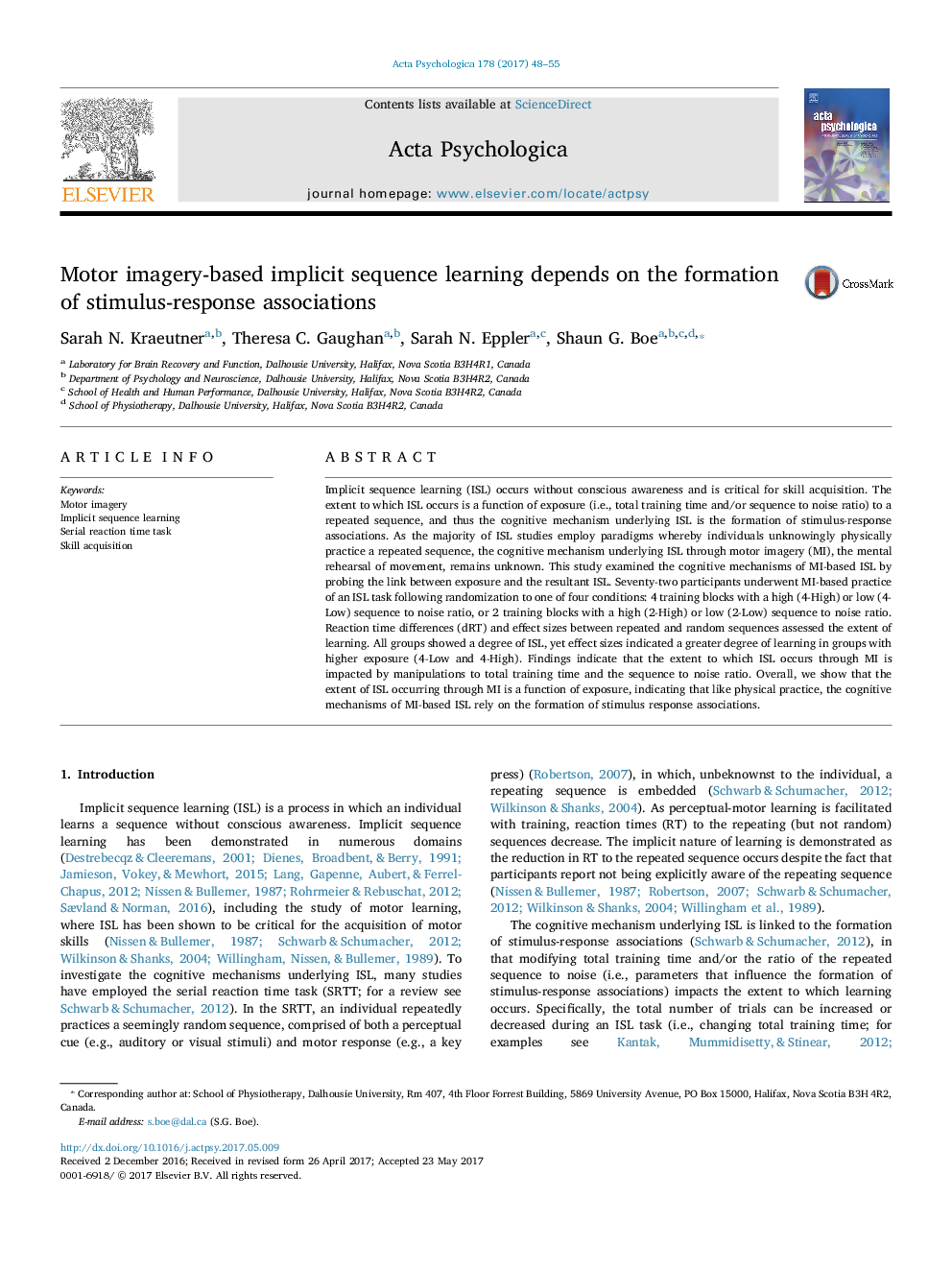ترجمه فارسی عنوان مقاله
یادگیری توالی ضمنی مبتنی بر تصویر مبتنی بر تشکیل انجمن سازگاری محرک است
عنوان انگلیسی
Motor imagery-based implicit sequence learning depends on the formation of stimulus-response associations
| کد مقاله | سال انتشار | تعداد صفحات مقاله انگلیسی |
|---|---|---|
| 161514 | 2017 | 8 صفحه PDF |
منبع

Publisher : Elsevier - Science Direct (الزویر - ساینس دایرکت)
Journal : Acta Psychologica, Volume 178, July 2017, Pages 48-55
ترجمه کلمات کلیدی
تصاویر متحرک، یادگیری ترکیبی نامتجانس، کار زمان واکنش سریال، کسب مهارت،
کلمات کلیدی انگلیسی
Motor imagery; Implicit sequence learning; Serial reaction time task; Skill acquisition;

